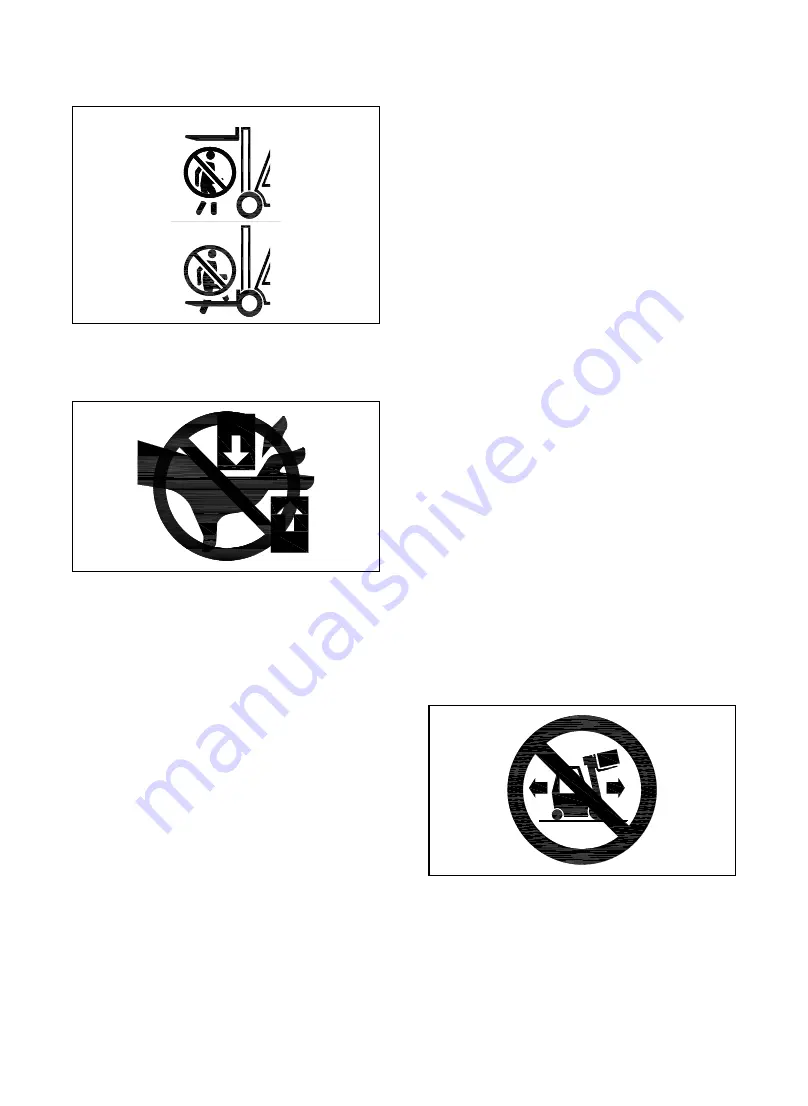
46
20.
Never place your head or body in between
the mast and overhead guard. Risk of serious
injury or death due to entrapment.
21.
Off-center loads may fall easily when
turning corners or driving on uneven surfaces
and increase the risk of the vehicle tipping over.
22.
Do not stack loads on forks in such a way
that the top of the load exceeds the load
bracket height. If unavoidable, make the load
stable and secure. When handling bulky loads
which restrict your vision, operate the forklift in
reverse or have a guide. When using a guide,
make sure you know and understand the
meaning of all hand, flag, whistle or other
signals being used. When transporting long
loads such as lumber, piping and oversized
cargo, or operating vehicles with elongated
attachments, pay close attention to the front
end when driving around corners or along
narrow aisles and be aware of other people.
23.
Try to reduce the front tilting angle when
stacking goods, you can only tilt forward when
the goods are higher than the stacking floor or
at a low position.
–
When stacking loads on a high place,
make the mast vertical at a height of 15
–
20cm above the ground and then lift the
load. Never attempt to tilt the mast when
the load is raised high.
–
To remove loads from high places, insert
forks into the pallet, lift slightly and drive
backwards, then lower the load. Tilt the
mast backwards after lowering. Never
attempt to tilt the mast with the load
elevated.
24.
It is dangerous to travel with the forks
elevated, regardless of whether loaded or not.
When travelling, the forks should be 15
–30 cm
from the ground with the mast tilted backward.
Do not operate a sideshift mechanism when
the forks are raised and loaded. This will cause
the forklift to be unbalanced.
25.
Do not tilt the mast forward when the cargo
is raised.






























